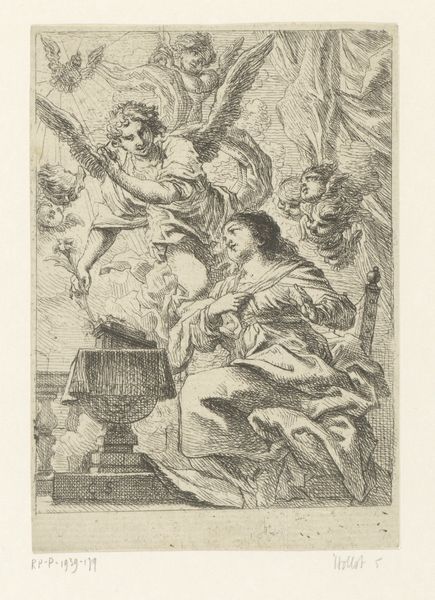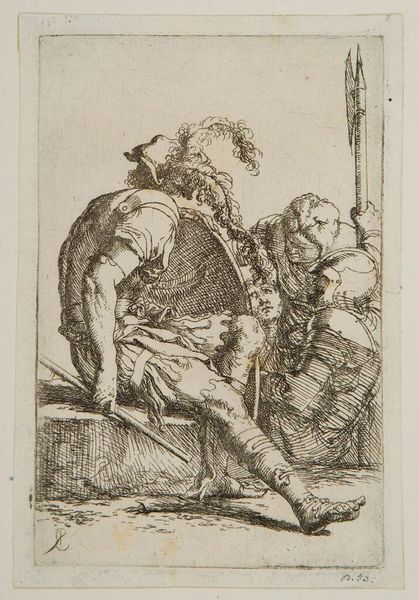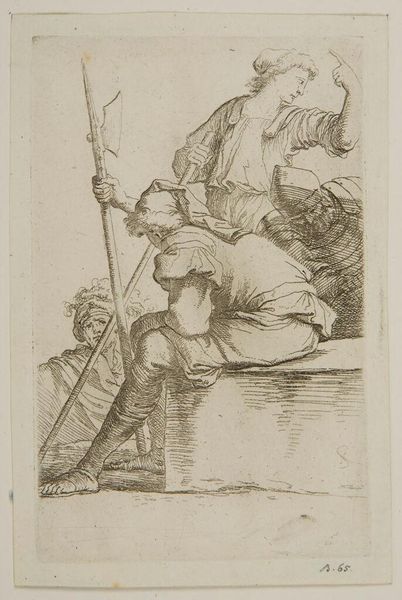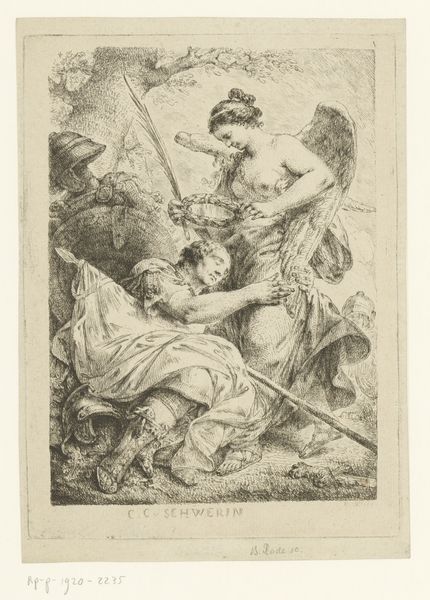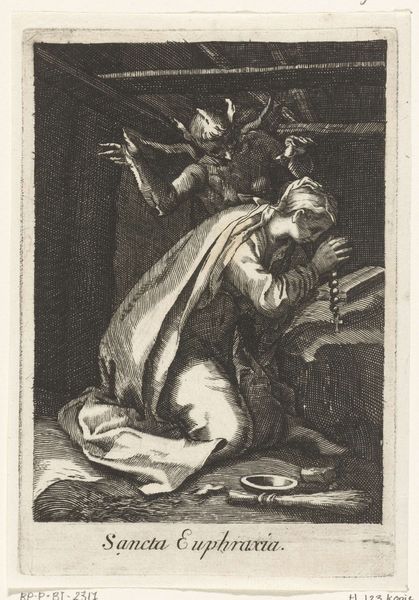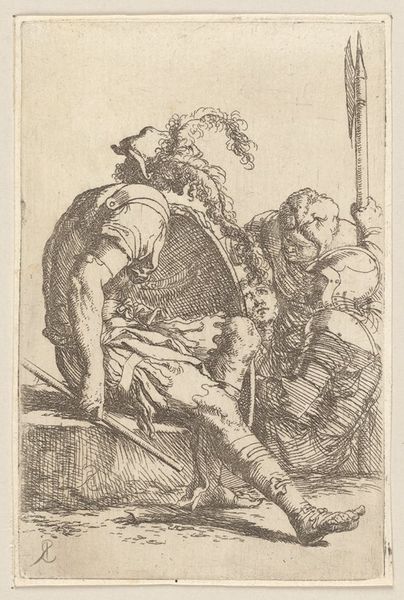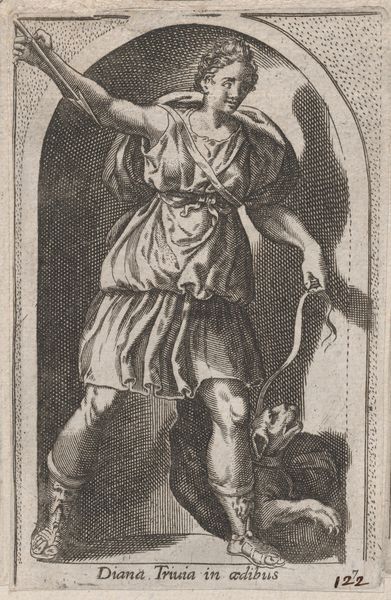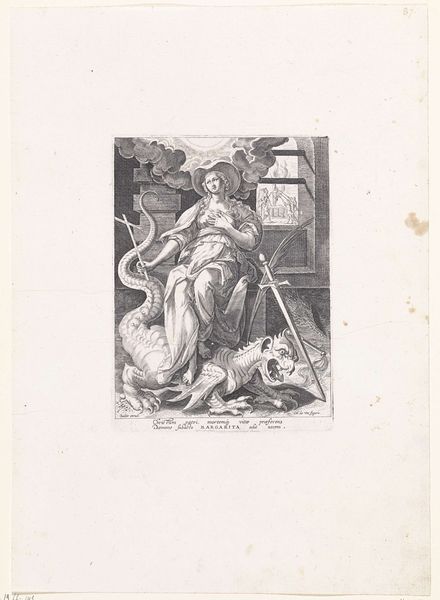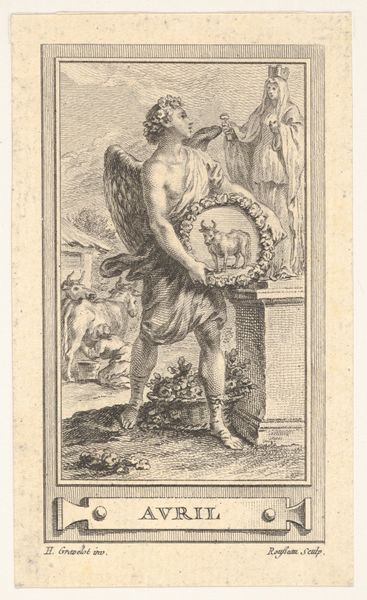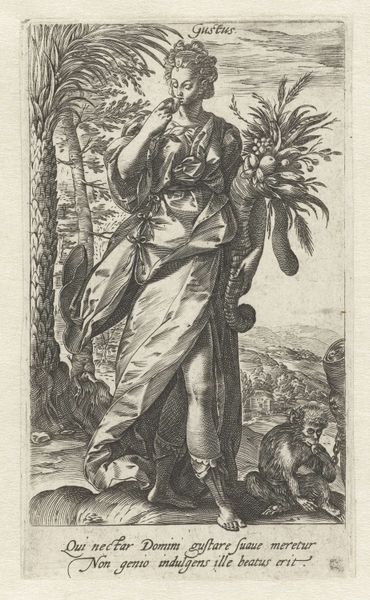
Dimensions: height 102 mm, width 58 mm
Copyright: Rijks Museum: Open Domain
Curator: Here we have a print from between 1775 and 1840 attributed to Ernst Ludwig Riepenhausen, titled "Dikke man wordt gedragen op een stoel" - which translates to "Fat man being carried on a chair". Editor: It's…striking. The texture of the engraving is dense, creating almost claustrophobic feel. And the figures, particularly the…stout gentleman, are rendered with an unflattering realism. Curator: Yes, it’s quite harsh, isn’t it? It speaks to the tradition of caricature in printmaking, where social commentary was often delivered through exaggerated and unflattering depictions. The engraving, as a medium, was quite accessible, facilitating wide distribution of such critical perspectives. Editor: I'm really drawn to the material impact. Imagine the physical labor involved in creating such intricate lines. Each one a deliberate mark, embedding a kind of critical judgment, or commentary within the very making of the image. Curator: Absolutely. And the "fat man" being carried. One can imagine the socio-political implications, critiquing aristocracy perhaps, or some form of decadence. It reminds us that the consumption and displays of wealth have long been a source of social tension, even visual mockery. Editor: This work highlights the process behind visual critique. How the artist's hand, using tools and ink, became an instrument for questioning social hierarchy. It’s a really intriguing dance between the craft and the culture. Curator: Agreed. By viewing such art we glimpse not only the style of the period, but also the societal issues people debated. Editor: It leaves you wondering about labor, privilege, and the enduring power of images to hold a mirror up to society – distorted, but clear.
Comments
No comments
Be the first to comment and join the conversation on the ultimate creative platform.
